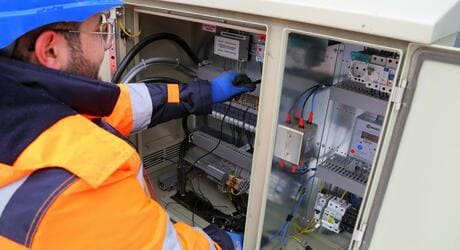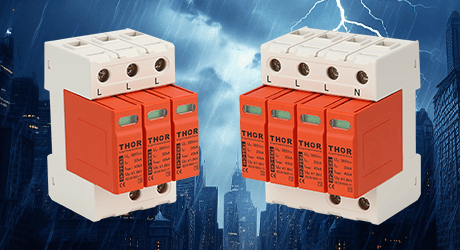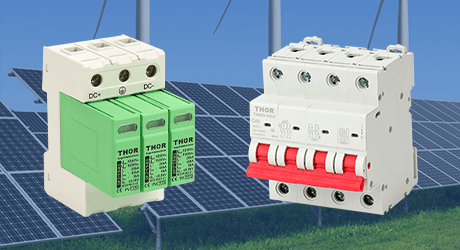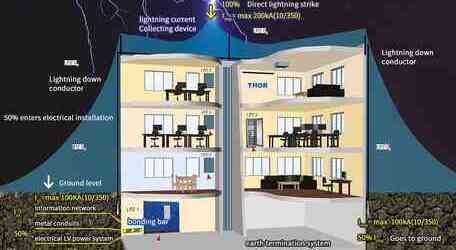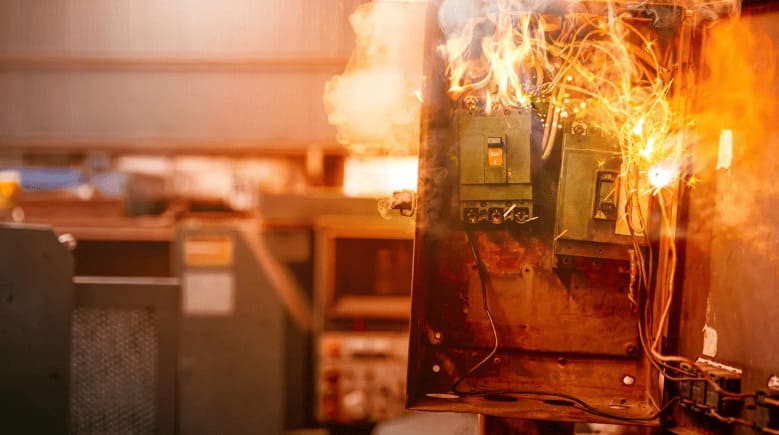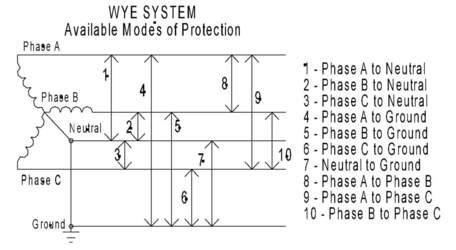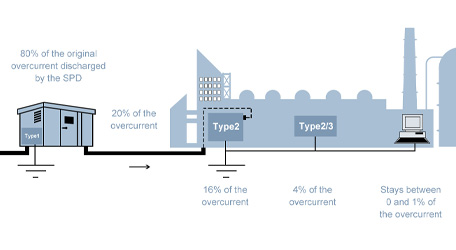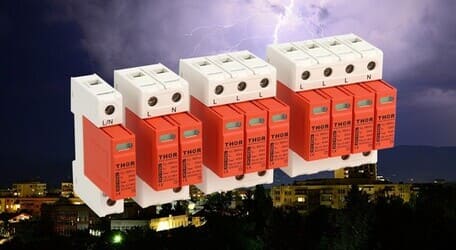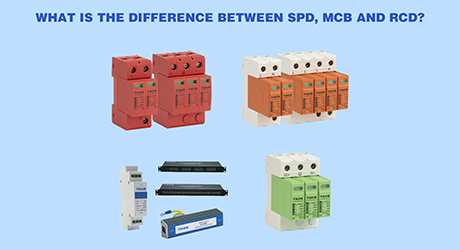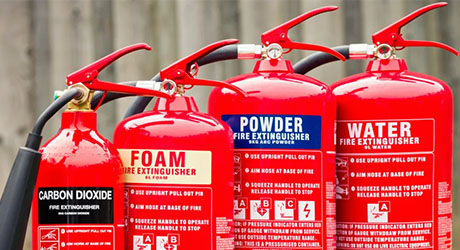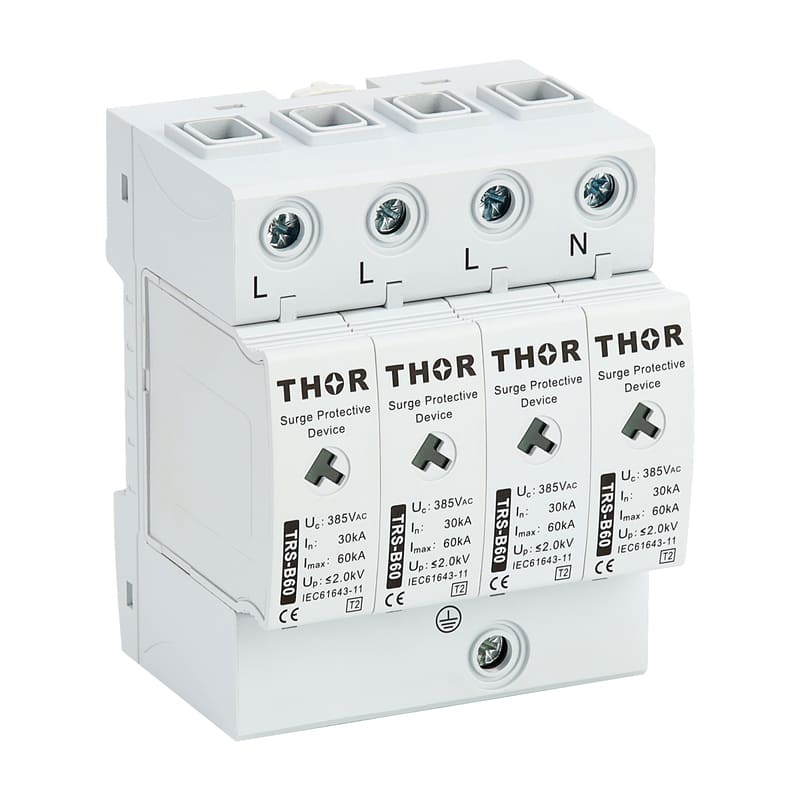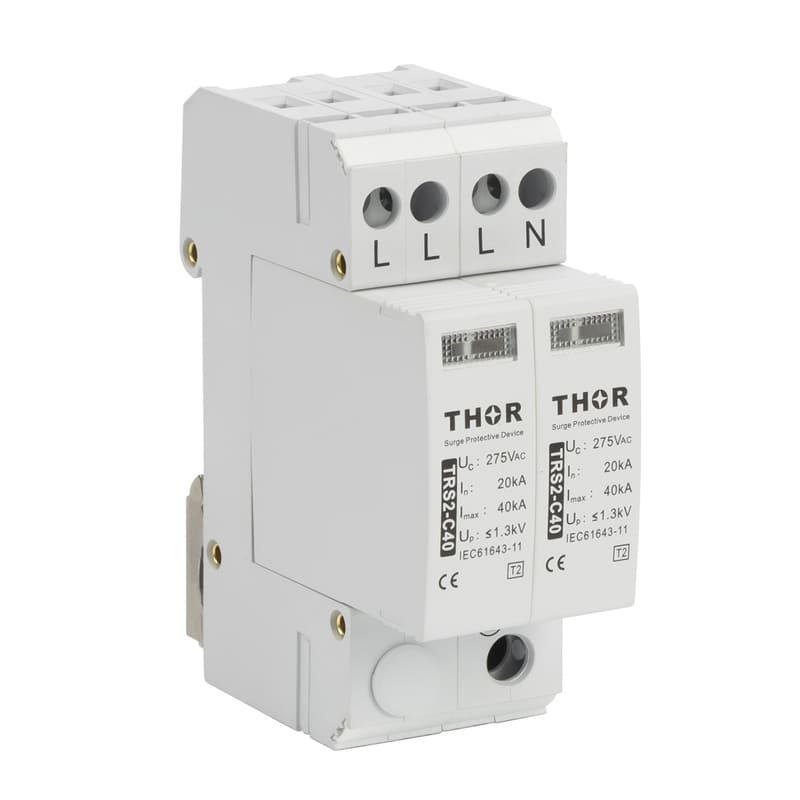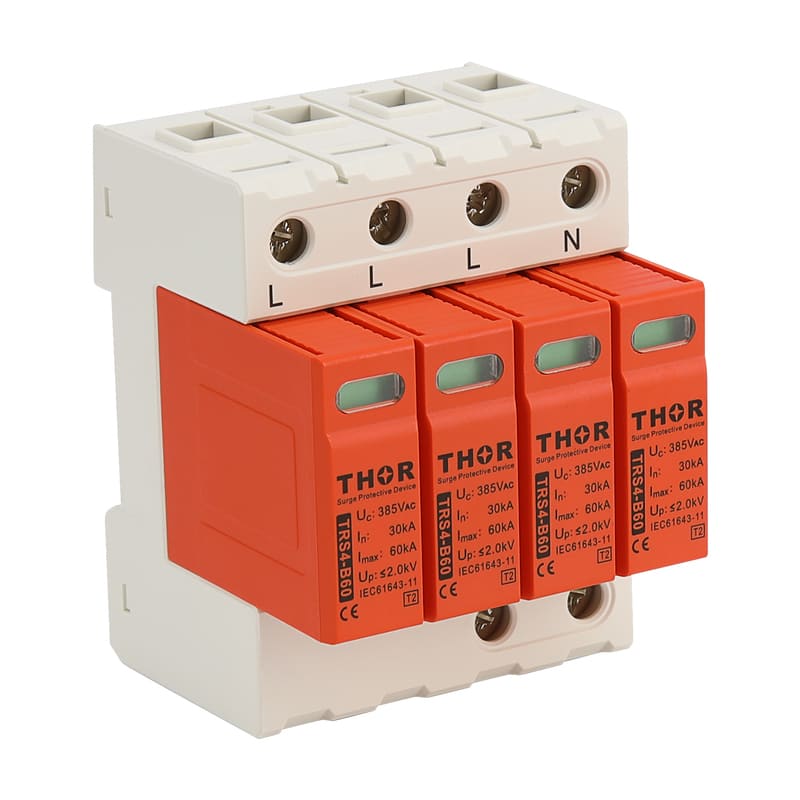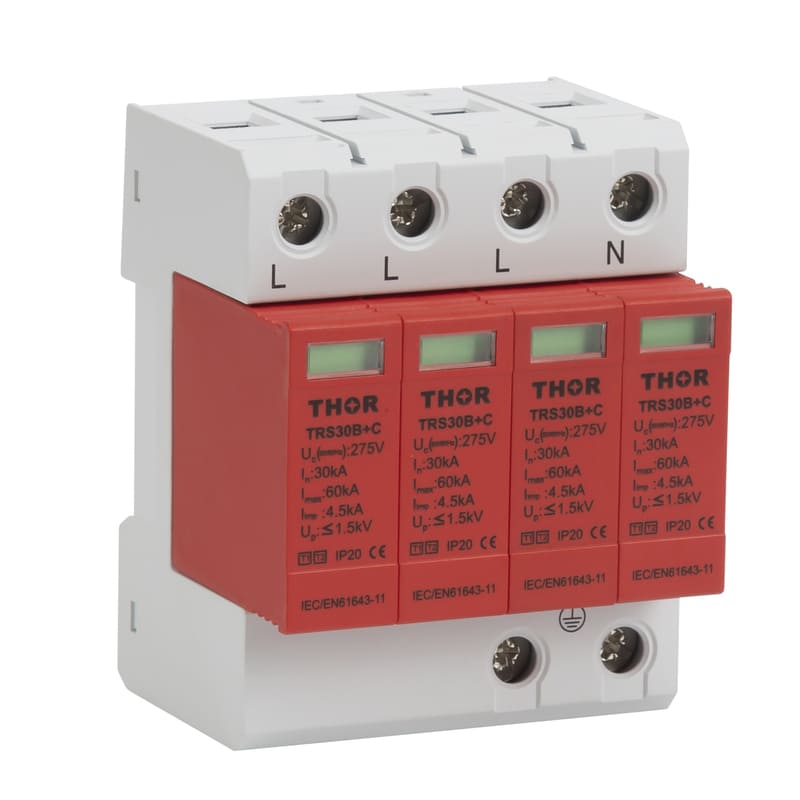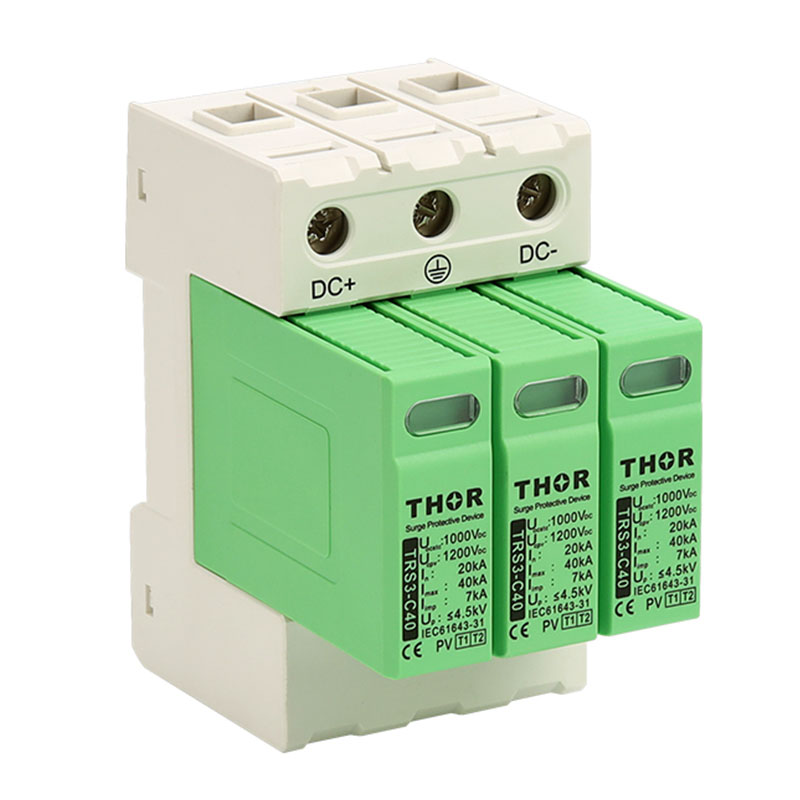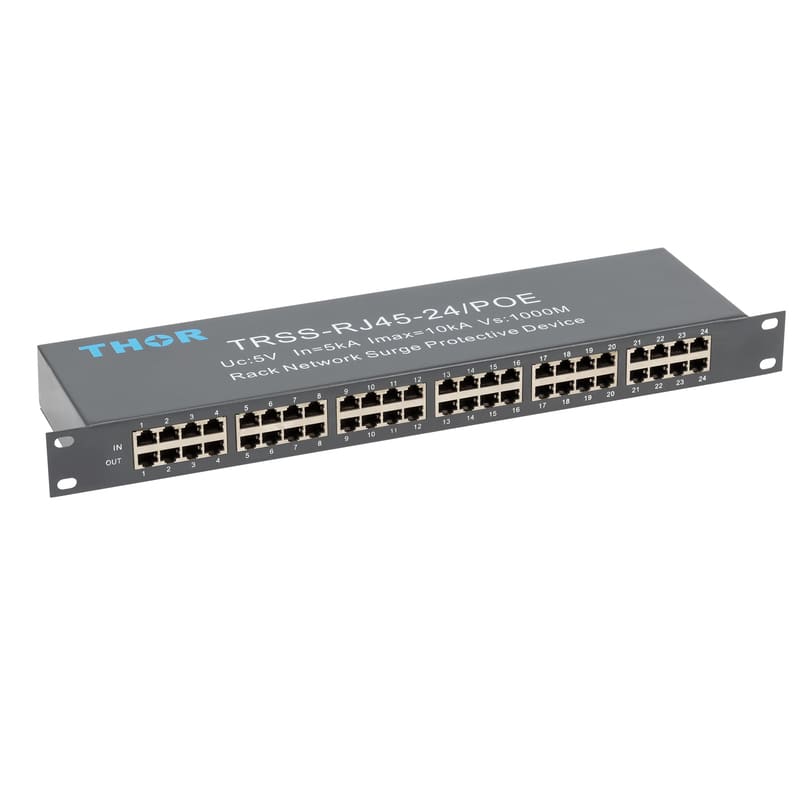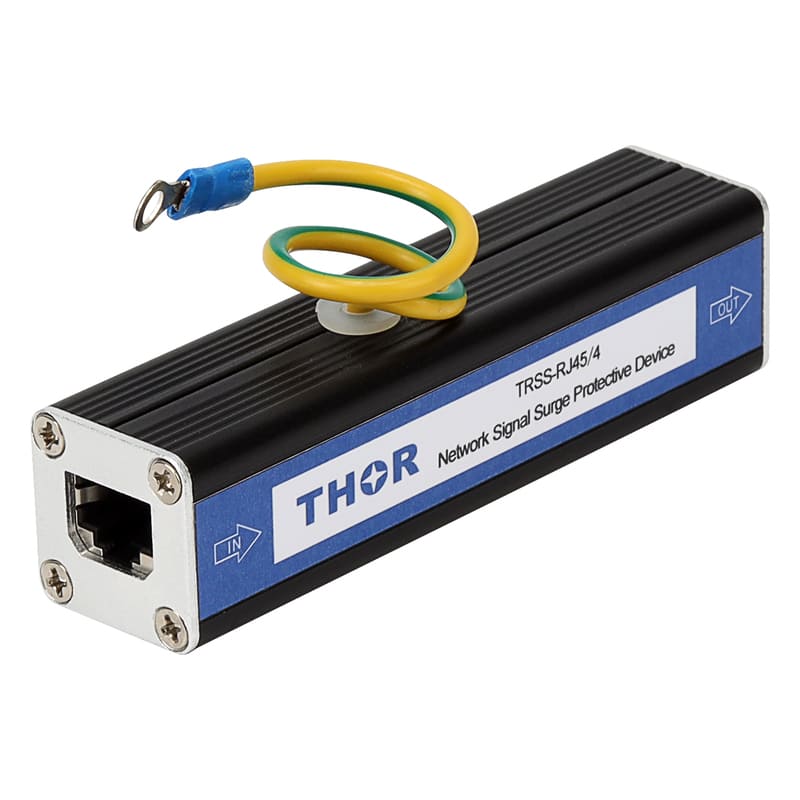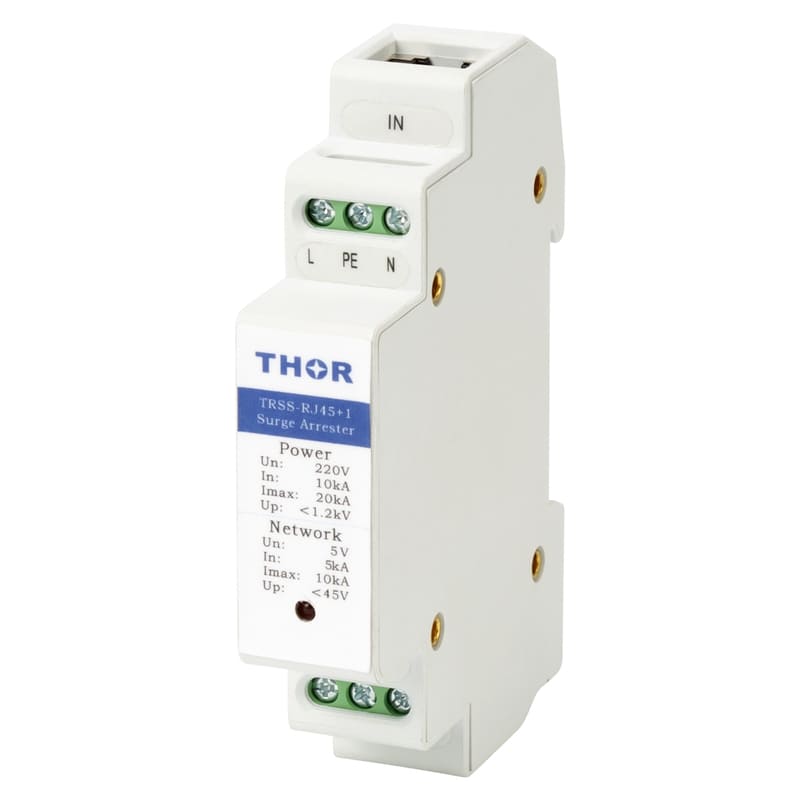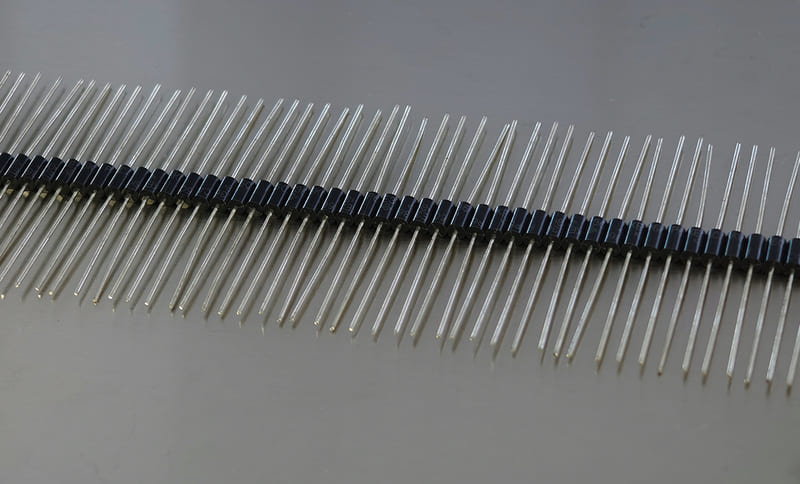
Introduction
In an increasingly connected world, protecting low-voltage signal and Ethernet lines has become just as critical as safeguarding power systems. Industrial control networks, data communication systems, and smart devices rely on uninterrupted, surge-free performance to maintain reliability. Surge protection devices (SPDs) are designed to defend these systems from voltage spikes caused by lightning, electrostatic discharge (ESD), and switching transients.
While most engineers are familiar with components like MOVs (metal-oxide varistors) or TVS (transient voltage suppression) diodes in SPDs, many overlook the crucial role of built-in resistors. These tiny components work silently but effectively to improve surge response, protect sensitive circuits, and ensure signal stability across power and data interfaces. In power circuits, resistors help discharge MOV leakage currents and stabilize voltage after transients. In signal surge protection devices, resistors are placed in series with data lines to limit surge energy, manage impedance, and shield downstream components.
This blog explores why built-in resistors are essential in modern SPD design. By examining both power and signal applications, and comparing typical resistor values and functions, we’ll demonstrate how this often-overlooked component makes a major impact on surge protection performance.
Understanding surge protection for signal lines
Signal lines are inherently more sensitive to overvoltage disturbances than power lines. Unlike power circuits, which are designed to tolerate brief overvoltages due to their high current-carrying capacity, signal paths operate at low voltage and current levels, often in the range of milliamps. This makes them particularly vulnerable to transient events like electrostatic discharge (ESD), electromagnetic interference (EMI), and lightning-induced surges.
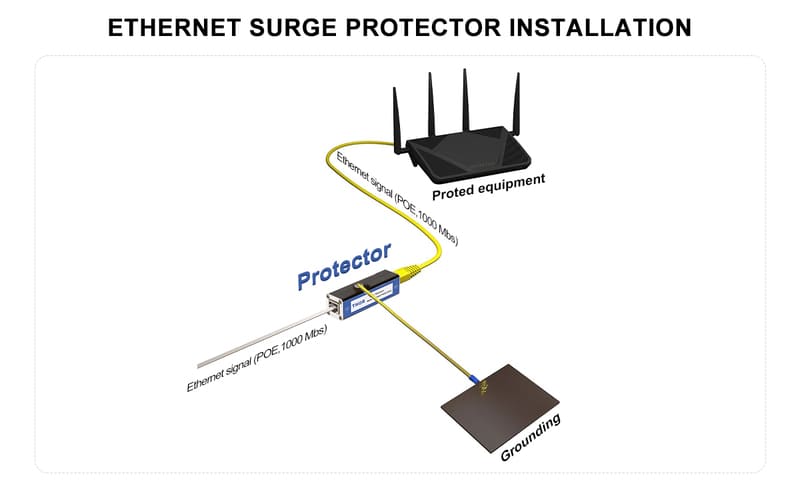
Figure 1 - Ethernet surge protection diagram
Common signal transmission protocols such as RS485, CAN, 4–20mA analog loops, and Ethernet are widely used in industrial automation, telecommunications, and building management systems. Any disturbance on these lines can lead to data corruption, equipment malfunction, or complete communication failure.
To counter these threats, signal surge protection devices are installed at critical points, such as I/O modules, communication ports, and field devices. These SPDs are designed to detect transient voltages and divert the surge energy to ground before it can damage sensitive electronics. The challenge lies in achieving fast response times while preserving signal integrity. Components like TVS diodes offer quick clamping, but if not properly matched with the surrounding circuitry, they may reflect part of the surge or degrade the signal.
Built-in resistors in signal SPDs serve to manage this balance. By introducing controlled resistance in series with the signal line, they help shape the surge profile, limit peak current, and dampen high-frequency ringing, which can otherwise cause false triggers or long-term degradation of communication reliability.
What is a resistor and how does it work in surge protection
A resistor is a passive two-terminal electrical component that opposes the flow of electric current. According to Ohm’s Law (V = IR), it creates a voltage drop proportional to the current passing through it. Resistors are defined by their resistance value (in ohms), power rating (in watts), and tolerance (percentage deviation from the stated value).
In surge protection applications, resistors play different roles depending on the circuit's purpose. Broadly, their functions include:
Current limiting: A low-ohm resistor placed in series with a signal or power line can limit the surge current reaching sensitive components, reducing the energy absorbed by the protection element (like a TVS diode).
Impedance matching: Especially important in high-speed or differential signal lines (e.g., Ethernet or RS485), resistors are used to match the impedance of the SPD circuit with the characteristic impedance of the transmission line, preventing reflections.
Leakage current management: High-ohm resistors, such as 100kΩ or 220kΩ, are commonly used in power SPD circuits to safely discharge residual voltages or bleed off leakage currents from components like MOVs.
Resistors also serve as part of RC snubber circuits, damping oscillations or voltage spikes caused by inductive switching. In all these cases, choosing the correct resistance value and power rating is critical. Too high a resistance may impact signal quality; too low may not provide sufficient surge control. When properly integrated, resistors contribute to more stable and reliable SPD performance.
How built in resistors improve surge protection
Built-in resistors play a foundational role in elevating the effectiveness of surge protection devices (SPDs). While they may be compact and passive by nature, their strategic placement within an SPD circuit significantly influences performance, durability, and system reliability.
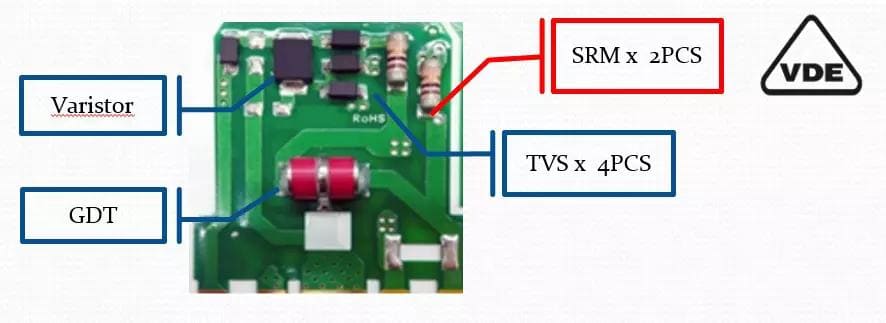
Figure 2 - Built in resistors in signal surge protection
One of the core advantages of integrating resistors into SPD design is current shaping. During a transient event, a resistor placed in series or across a sensitive point helps to regulate the flow of surge current. By introducing a controlled resistance, the resistor reduces the peak current that downstream components like TVS diodes or MOVs must absorb. This not only extends the life of these protective elements but also minimizes the risk of overvoltage stress reaching the protected load.
Resistors also contribute to impedance balancing, especially in high-frequency or differential signal applications such as Ethernet and RS485. Mismatched impedance can result in signal reflections, voltage overshoots, or electromagnetic interference. A properly selected resistor value helps preserve signal integrity by damping high-frequency oscillations and smoothing out line transitions.
In circuits where residual energy remains after a surge event, built-in resistors act as leakage discharge paths. For example, high-ohmic resistors connected across MOVs can bleed off lingering voltage, ensuring that the protection component resets fully to its non-conductive state. This improves system stability during standby or idle conditions.
Whether in power or signal circuits, built-in resistors serve as quiet guardians in SPD design. In signal SPDs, their role becomes especially active and precise. Resistors like 1.5Ω 1W 1% are placed in series with the signal lines to limit surge current, dampen high-frequency oscillations, and prevent overshoot—all while maintaining normal signal quality. Without these resistors, surge energy could overwhelm the clamping diode or distort the signal, leading to errors or permanent damage.
RS485 surge protection device overview
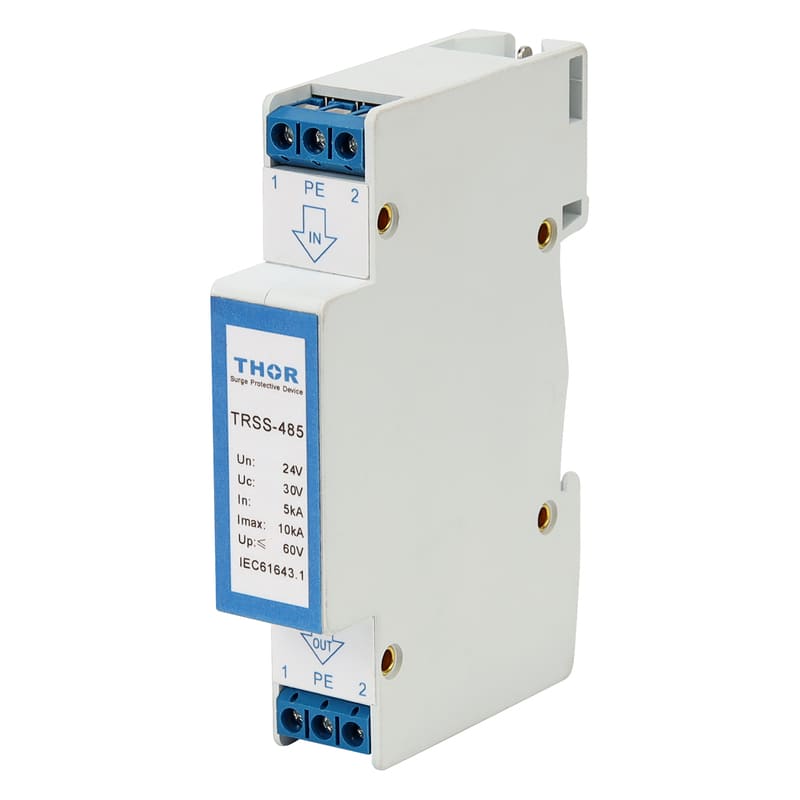
TRSS-485 Control Signal Surge Protective Device
The RS485 surge protection device—also known as an RS-485 lightning arrester or RS485 signal surge protector—is designed to protect industrial communication interfaces from voltage spikes caused by lightning, inductive switching, or electrostatic discharge. Its core principle is to use nonlinear protection components that exhibit high impedance under normal RS485 signal voltages, but quickly switch to low impedance when exposed to a surge, safely discharging the energy to ground.
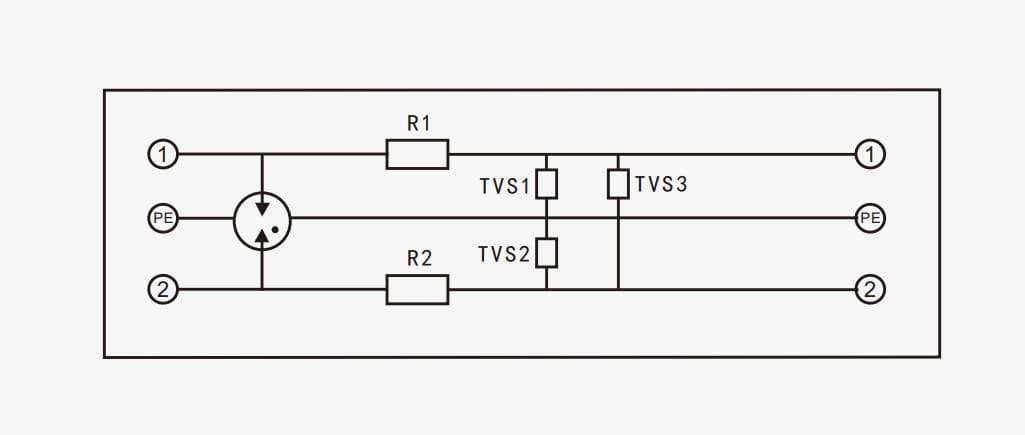
Figure 3 - Basic circuit diagram
Key Protection Components:
● Gas Discharge Tube (GDT): Acts as the first protection stage. It remains inactive during normal communication (±7V to ±12V), but once the surge exceeds its breakdown voltage (e.g., 90V, 150V), it conducts large surge currents to ground. It is ideal for handling common-mode surges.
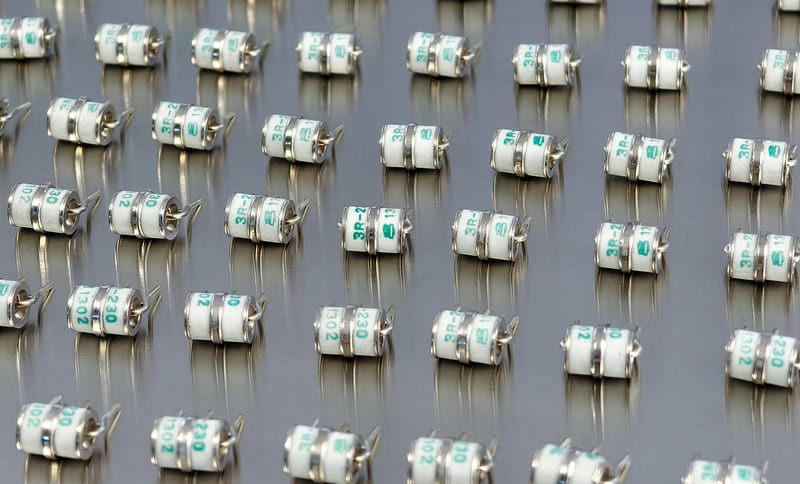
Figure 4 - Gas discharge tube
● Transient Voltage Suppression (TVS) Diode: The second stage that clamps the remaining surge to safe levels (15V–36V), protecting RS485 transceivers. It acts within picoseconds, and is ideal for differential-mode surges.
● Built-in Series Resistors: Usually around 1.5Ω 1W, these resistors reduce the surge current reaching the TVS diode and enhance energy coordination between GDT and TVS stages.
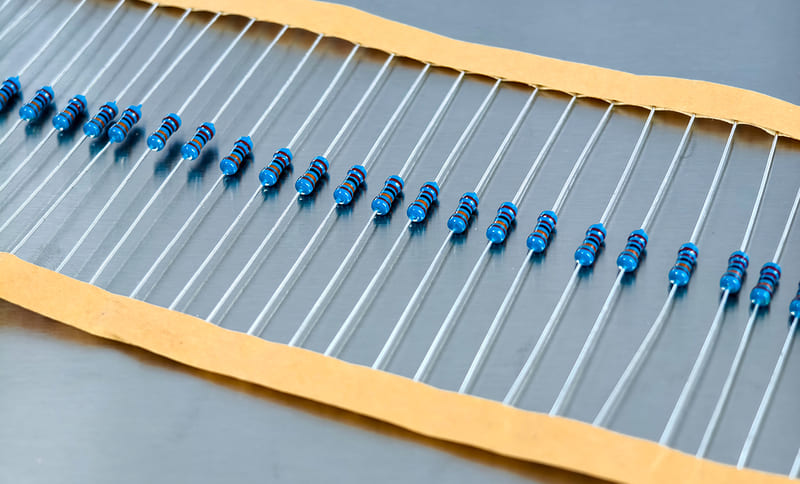
Figure 5 - Resistors used in surge protection
Multi-stage Protection Structure:
● GDT absorbs the majority of the surge energy.
● TVS clamps any residual voltage precisely.
● Built-in resistors and PCB layout help decouple energy between stages and protect sensitive components.
Importance of Grounding: A low-impedance ground path is essential. Without it, even the best components can't discharge surge energy effectively. Proper design ensures that the surge protector has minimal impact on communication quality during normal operation.
Resistors in SPD designs vary widely in value, power rating, and function depending on whether they are used in signal or power protection. Here are some typical examples:
|
Resistor Value |
Power Rating |
Application Context |
Function |
|
1.5Ω
|
1W
|
RS485, signal line SPD
|
Limits surge current, improves damping
|
|
10Ω – 33Ω
|
1/2W – 1W
|
CAN, analog signal lines
|
Surge limiting, impedance matching |
|
75Ω – 100Ω
|
1/2W
|
Ethernet, differential pairs
|
Transmission line termination/damping
|
|
100kΩ– 220kΩ
|
1/4W – 1W
|
AC/DC power SPD (MOV leakage)
|
Residual voltage discharge, MOV stability
|
Table 1 - Common Resistor Values in SPDs
The above table highlights the dual nature of resistor application in SPD designs. In signal SPDs, low-ohmic resistors manage surge energy and maintain data signal quality. In power SPDs, high-ohmic resistors act as bleeders to enhance post-surge recovery and stability.
It’s important to select these resistors carefully based on the SPD's operating environment, signal frequency, and expected surge conditions. Underrated or mismatched resistors can compromise protection or interfere with normal signal transmission.
Conclusion
In surge protection devices—especially those designed for signal lines like RS485 and Ethernet—built-in resistors serve as more than passive components. Their integration is a deliberate engineering choice that shapes the SPD’s ability to limit surge current, dampen transients, and preserve communication integrity. From low-ohmic resistors protecting high-speed data lines to high-value bleeder resistors managing MOV leakage in power systems, each implementation plays a distinct and vital role.
In signal surge protection devices, built-in resistors such as 1.5Ω 1W 1% are indispensable. They actively reduce the stress placed on TVS diodes, assist in impedance balancing, and mitigate harmful signal reflections—all without degrading normal operation. This helps ensure long-term reliability of communication protocols like RS485, which are common in industrial automation and control systems.
For engineers designing or selecting SPDs, understanding the function of these resistors enables more precise, application-specific protection. It also highlights why a well-designed SPD is more than just a fast-clamping diode—it's a coordinated system, and the resistor is a key part of that synergy.
Thor’s SPD products reflect this principle. Our designs incorporate carefully matched resistors to complement the performance of clamping devices, offering robust, intelligent protection for both power and signal lines. As communication systems evolve and sensitivity increases, built-in resistors will continue to play a central role in reliable surge protection.
Frequently Asked Questions
Q1: Do all signal surge protection devices use built-in resistors?
A: Not all SPDs include resistors, but high-performance signal surge protectors—especially for RS485 and Ethernet—typically use low-ohmic resistors to improve protection and signal integrity.
Q2: What is the ideal resistor value for RS485 surge protection?
A: Commonly used values include 1.5Ω 1W 1%, optimized for balancing surge current limiting and impedance matching without degrading RS485 signal quality.
Q3: Can RJ45 connectors be used for RS485 protection?
A: Yes, many RS485 SPDs use RJ45 connectors for convenience, but the internal protection circuit must be designed for RS485 signal characteristics, not Ethernet.

